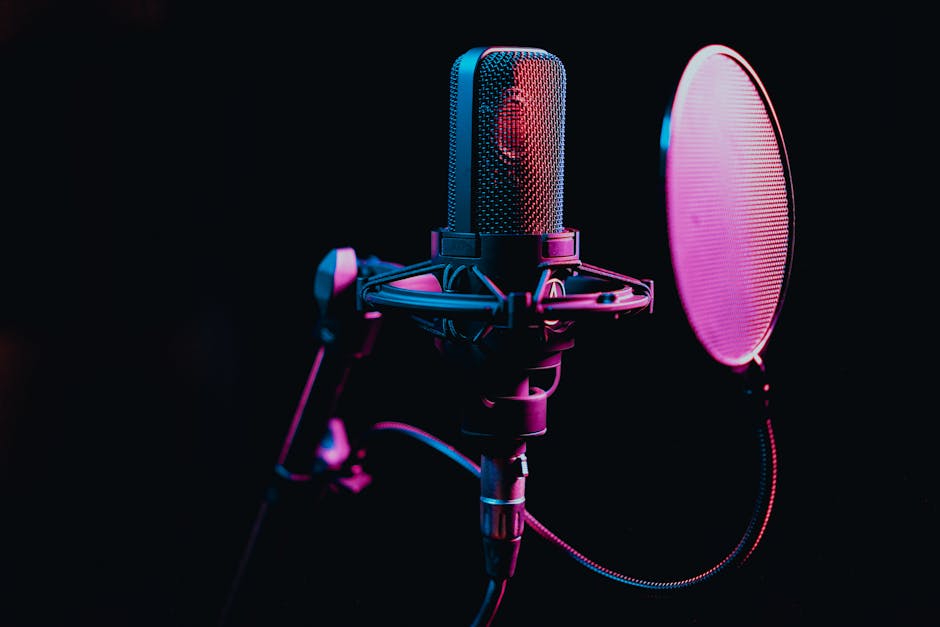The Impact of Multi-track Recording on Podcast Post-production.
The Impact of Multi-track Recording on Podcast Post-production
In the vibrant and competitive world of podcasting, delivering pristine audio isn’t just a luxury; it’s a necessity. Listeners expect clarity, balance, and a professional sound that keeps them engaged. While the recording itself lays the groundwork, it’s the post-production phase where a raw audio file truly transforms into a polished broadcast. Central to this transformation, and often the difference between amateur and professional sound, is the adoption of multi-track recording. This technique, where each audio source (each speaker, background music, sound effects) is captured on its own independent track, fundamentally reshapes the entire post-production workflow, offering unparalleled control, flexibility, and ultimately, a superior listening experience.
Gone are the days when a single, consolidated audio file was the norm for complex discussions. Imagine trying to fix a guest’s microphone issue when their voice is inseparable from the host’s, or trying to adjust background music without affecting dialogue. Multi-track recording eliminates these headaches, providing editors with the surgical precision needed to sculpt sound. It’s not merely a technical choice; it’s a strategic decision that empowers post-production with capabilities far beyond what single-track recording can offer, impacting everything from noise reduction to creative sound design. Let’s delve deeper into how this powerful approach revolutionizes the journey from raw audio to a broadcast-ready podcast.
The Granular Control Advantage: Isolating Voices and Sounds for Flawless Edits
The most immediate and profound impact of multi-track recording on podcast post-production is the unparalleled level of granular control it affords. When each participant or audio element (like a host, guest, co-host, or even a sound effect) is recorded onto its own discrete track, the editor gains the power to manipulate each component independently. This separation is a game-changer for several reasons, primarily in isolating and addressing specific audio challenges without affecting other elements.
Consider a scenario where one speaker constantly taps their foot, or another has a noisy chair. With a single-track recording, these extraneous sounds would be baked into the entire audio, making them incredibly difficult, if not impossible, to remove without degrading the quality of the desired dialogue. However, with multi-track recording, the editor can target the specific track containing the problematic audio, applying noise reduction, gates, or even surgical edits to that track alone. This precision ensures that the integrity of the other speakers’ audio remains untouched. Similarly, if one speaker is too loud or too quiet, their individual track can be adjusted for volume, compression, and equalization without compromising the overall mix. This kind of nuanced control is the bedrock of professional podcast production, allowing for a level of polish that simply isn’t achievable otherwise. It means fewer compromises and more opportunities to achieve a balanced, comfortable listening experience for the audience.
Eliminating Cross-Talk and Environmental Bleed
One of the persistent challenges in recording multiple speakers in the same room is “bleed” or “cross-talk”—where one microphone picks up the sound from another speaker or ambient room noise. While proper microphone technique and room treatment help, multi-track recording offers a critical safety net in post-production. By having each voice on its own track, an editor can apply specific filters, gates, or expanders to minimize bleed on each individual track. For instance, if a guest’s microphone picks up too much of the host’s louder voice, the editor can gate the guest’s track so it only opens when the guest is actively speaking, effectively muting the bleed during the host’s segments. This capability significantly cleans up the overall sound, making dialogue clearer and less muddy, which is a hallmark of professional advanced podcast editing techniques.
Elevating Audio Fidelity: How Multi-track Recording Transforms Noise Reduction and Leveling
Beyond basic isolation, multi-track recording profoundly elevates the fidelity of the final podcast by enabling more effective and less destructive noise reduction and precise leveling. In a single-track recording, applying noise reduction or compression globally can often introduce artifacts or flatten the dynamic range of the entire conversation. With separated tracks, these critical post-production tasks can be performed with surgical precision, leading to a much cleaner and more natural-sounding end product.

Imagine a podcast where one participant recorded in a room with a persistent hum, while others had clean audio. In a multi-track setup, the editor can apply a specific noise reduction profile only to the hum-affected track, preserving the clarity and natural dynamics of the other speakers. This targeted approach prevents the “over-processing” that often plagues single-track recordings, where an attempt to fix one problem can inadvertently degrade other, perfectly good audio segments. Similarly, achieving consistent audio levels across multiple speakers is paramount for listener comfort. Multi-track recording allows individual application of compression, limiting, and gain adjustments to each voice track. This means a soft-spoken host can be gently boosted, and an overly enthusiastic guest can be subtly tamed, all without impacting the other, perfectly balanced voices. The result is a podcast where the listener never has to reach for the volume knob, enjoying a smooth, consistent audio journey.
Dynamic Processing for Each Voice
Each voice is unique, with different timbres, speaking volumes, and microphone techniques. Multi-track recording allows for customized dynamic processing—like compression and equalization—for each individual speaker. This means an editor can enhance the warmth of one voice, reduce harshness in another, or bring out clarity in a third, tailoring the sound to each person’s unique vocal characteristics. This level of individualized attention contributes significantly to the overall audio quality, making each speaker sound their best and contributing to a richer, more engaging listening experience. Understanding audio engineering principles is key here.
Unleashing Creative Soundscapes: Expanding Post-production’s Artistic Palette
Beyond mere corrective measures, multi-track recording dramatically expands the creative possibilities within podcast post-production, allowing producers to craft rich, immersive soundscapes that enhance storytelling and listener engagement. When voices, music, and sound effects are all on separate tracks, the editor gains the freedom to blend, layer, and manipulate these elements in ways that simply aren’t feasible with a consolidated file.
Think about integrating background music: with individual tracks, music can be precisely ducked (lowered) only when a speaker begins, then gently brought back up during pauses, ensuring it never overwhelms the dialogue. Different segments can feature different musical beds, transitioning seamlessly without affecting the spoken word. Similarly, sound effects—whether for ambiance, emphasis, or scene-setting—can be placed, panned, and volume-adjusted with pinpoint accuracy. Want a door creak to sound like it’s coming from the left, or a specific sound effect to punctuate a key statement? Multi-track recording makes this possible, allowing for sophisticated sound design that elevates the narrative. This artistic freedom transforms a basic audio recording into a captivating auditory experience, pulling listeners deeper into the podcast’s world. This is where sound design principles truly come into play.
Spatial Audio and Immersive Storytelling
For podcasts aiming for a highly immersive experience, multi-track recording is indispensable for creating spatial audio effects. By panning individual voices and sound effects across the stereo field (or even into more advanced surround formats), editors can create the illusion of speakers being in different locations or sounds moving around the listener. This technique, rooted in principles of psychoacoustics, can be incredibly powerful for narrative podcasts, audio dramas, or even interviews where a sense of environment is crucial. The ability to control each sound’s position and movement independently is




Post Comment